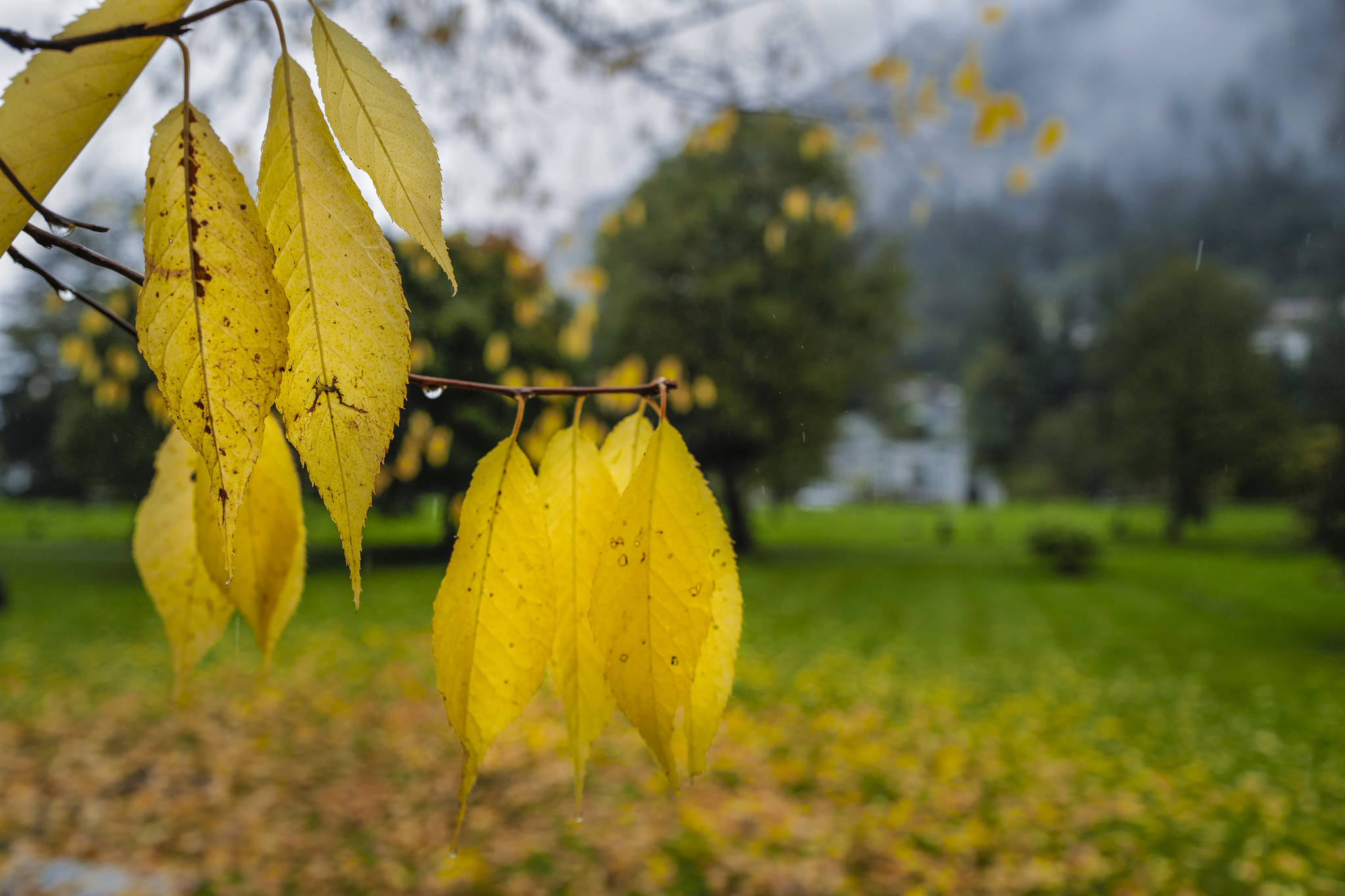It’s really fall, now — the autumnal equinox has passed, and we’ve all noted the rapidly shortening days. The fireweed leaves are mostly reddish and the seed pods have shed their offspring to the winds. A friend observed that the curly valves of the pods looked like the plants had been given perms — all by the same hairdresser.
Flocks of robins move across the landscape. Up near Cropley Lake, we saw a big flock of several dozen robins, feasting on this year’s plentiful crops of blueberry and crowberry and making sharp little call notes I don’t hear at other times of year. Song sparrows, on the other hand, aren’t so sure it’s fall — out at Point Louisa they’ve been singing.
[Crab spiders are voracious little predator]
Under our feet in the forests, spruce cones densely litter the ground in some places. Spruces produced huge cone crops this year (remember those pollen storms last spring?), and the red squirrels are busily biting them off and dropping them to the ground, to be picked up and stored later. The cones bear most of their seeds in the basal part of the cone, so by peeling off just a few scales, a squirrel can readily tell if cone will provide a good lunch. But I wonder if they also assess whole cone crops: judging that this tree has more good cones on it than that one, so this crop is worth harvesting.
While I’m thinking about squirrels, I’ll pass on a tidbit I read recently. The eastern gray squirrel responds to the alarm calls of birds by becoming more vigilant or hiding. Our red squirrels do, too. In addition, when the alarm stops, the gray squirrel doesn’t necessarily resume ordinary activities immediately. It waits for an all-clear signal from the birds, when they again begin to twitter and chirp in their normal way and again go about their regular activities. So, of course, I wonder if red squirrels might do this too.
On a ski slope at Eaglecrest, a bunch of Parks and Rec hikers came upon a sooty grouse standing on a little log bridge over a run-off gully. Motionless for long minutes, but clearly alert and watchful. We thought there were probably full-grown chicks in the fern thickets and underbrush in the forest edge, not very far away, but her patience was greater than ours and we never saw them.
Not many days later, the clouds lay thick over Gastineau Channel and the city. Guessing that those clouds would clear away, I went with a friend up the tram to see what we could see along the trail up Gold Ridge. We trudged along in cloud and tourist crowds, gradually shedding the crowds and eventually emerging from clouds to find full sun. Spectacular! The city was totally invisible, and the clouds extended up the valleys on Douglas Island, clearly defining the topography. We watched three big airplanes come in from the south, skimming the top of the cloud layer and then disappearing as they approached the airport. Finding a comfortable perch on which to enjoy our snacks and a nice cuppa tea, we watches as that heavy cloud began to thin and develop gaps, gradually exposing bits of Douglas, the bridge, Seymour Canal way off to the south, and finally dissipate entirely.
Along the trail, the last blooming survivors of five kinds of flowers: purple asters and northern geraniums, white rattlesnake root and miners’ lettuce, yellow avens. Lichen gardens offered subdued colors but wonderfully varied textures. A stunning show of color came from the red leaves of the blueberry mats as the morning sun made them glow vividly. Off on the slope toward the Gold Creek valley, a mountain goat grazed. Below us, just above the clouds, a migrating hawk soared along the slope. So, although we saw no ptarmigan or marmots, we counted the walk a good one. Sadly, that was probably my last trip up there for this season.
The very next day, Parks and Rec headed up the Dan Moller trail in the rain. We were pleased to see that some of the rotten planks of the trail had been replaced; a few more planks lay beside the trail, an indication of future replacements. The very last bog laurel flowers waiting in vain for a bee. The white swamp gentians were long past flowering, but their small yellow seed-cups were common. Some of those cups still held a few seeds, looking like eggs in a mini bird nest.
Two interesting bird observations just before solstice: I was pleased to discover a flock of about 20 rusty blackbirds in my driveway one rainy morning. They were very busy pecking at the ground, maybe getting grit? Populations of this species have declined precipitously in recent years, so it’s always good to spot them. On Eagle Beach, I saw a pair of white-winged crossbills working over a stump just above the highest tide line. Some years ago, we repeatedly saw groups of crossbills gleaning something from a big log, also at the high tide line. So this behavior is not merely incidental, but apparently no one knows what they might be getting from this. One more mystery.
• Mary F. Willson is a retired professor of ecology. “On The Trails” is a weekly column that appears every Wednesday.

